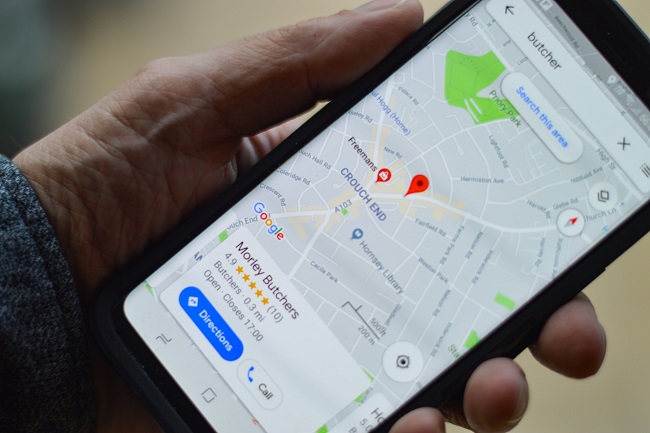Marketing and advertising an important parts of business growth. With the number of internet users increasing year by year, many brands have increased their digital marketing spending to reach more consumers. The global digital media market in 2022 is worth $602.25 billion, or 66.4% of global media sales.
This refers to media on devices connected to the Internet such as computers, mobile devices and smart devices. Social media includes everything from email marketing and video content to search results and more to drive performance marketing.
How To Promote Your Business Without Using Paid Ad
You may not have a lot of money to spend on marketing when you start your startup, but that doesn’t mean there aren’t effective ways to get your brand out there. Before the Internet, small businesses had few inexpensive ways to market their products, such as printing flyers or sponsoring small local events.
There are now all kinds of opportunities available on the web for free. It’s all about knowing where to look. There are a few ways to market your business for free that include:
- Social Media: Using social media platforms such as Facebook, Instagram, Twitter and LinkedIn is a great way to create buzz around your business for free.
- Blog: Write an article or blog about your business and post it on your website or on websites like Medium and LinkedIn to help raise awareness. • Media Releases: Submit newsletters to local media and online media release directories.
- Networking: Attend networking events such as trade shows and exhibitions to build valuable business relationships.
- Flyers and Cards: Distribute newsletters, brochures and business cards to local businesses in your area and surrounding areas.
9 Free and Low-Cost Ways And Alternatives To Promote Your Business Online
1. Create a blog to promote your business
A blog not only helps your business gain exposure from subscribers, but it is also a way to connect directly with your potential customers. But remember that one of the keys to blogging is to update your feed as often as you can.
Write a blog that tells your brand story and answers questions customers may have. You can also share your blog on your social media profile to drive traffic to your website.
2. Add SEO to your online strategy
It is important to optimize your business website for search engines so that customers can find you easily. SEO cannot always be underestimated in the world of Google search. Search engine optimization gives you a high level of support when you do your business. It helps you increase website traffic and gives you authority in your field of work. You can pick up a book or find resources online to learn how to market your business with SEO to ensure your site is ready for search engine performance.
3. Use print media
Whenever your business is responsible for knowing, plan to print reports. They are a powerful media device to help create ads, and access to a free server is the amount. There are many websites you can use for your press releases, such as PRLog and 24/7 Press Release.
4. Find partners to promote your business
If you want to take product reviews further and get even more people to promote your product, consider starting an affiliate program like CPA marketing. Affiliate marketing attracts other people to drive to your business by offering a service and every sale, such as a referral program.
5. Join the online community and contribute
Every niche has an online community. But just signing up to a forum and posting about your business one time doesn’t do anyone any good and can offend people. Be proactive and build relationships with the community while keeping your business on the side. Promote your business by adding a link to your signature or simply mentioning it when the context is appropriate.
6. Make your website content shareable
Whether you’re writing a long-form blog post, creating engaging videos, or just showing off a new product, everything on your website should be shareable. Relating links to share information on the website through advertising, email or SMS so that you can connect their networks and businesses without pay!
7. Start email marketing
Email marketing is a great way to attract and retain customers as a small business. You can ask potential customers to sign up for an email list on your social media profile or online store. Email is one of the most profitable ways to market a new business, with a return of $42 for every dollar invested.
8. Do an expert roundup
While blogging is a fantastic way to drive web traffic, it can be a lot of work. One way around this problem is to ask for donations from other bloggers or experts. Find subject matter experts and ask them to contribute ideas, such as tips, recipes, or articles to your blog. Then add a list of all the responses you received. You will provide your audience with great content from relevant experts, and contributors will want to share the story with your readers, increasing your reach.
9. Post compelling content frequently
To keep your relationships and relationships going over time, sharing content is important regularly. Research shows that audiences react differently depending on how often you post, so be sure to experiment to find the best sign for your brand. You can also compare your posting times and engagement rates to those of your competitors.
Promote Your Business On Social Media
In recent years, social media has gone from a new concept to a staple for marketers. Of all the new social media platforms, social media is disrupting traditional marketing the most. With the old outbound marketing method, messages are sent to customers with information and communication is one-way.
With social media, consumers and businesses can interact instantly. Both parties can ask each other questions, edit each other’s content and work on creating relationships.
Here are a few tips for promoting your business on social networks.
Choose the right platform
When determining which channels to use, you need to consider your customers and your business. It is important to create an account on the platform that your audience uses so that they can easily connect with you. Do some research to find out which sites your audience is likely to use, and then use those.
Create a calendar
Rushing to create posts at the last minute can lead to poor content. Lack of organization can lead to repeated posts or interruptions in your presence on one of your channels. Creating a social media content calendar can help avoid these mistakes and make posts more effective. A content calendar also helps you create goals and plans to achieve them, and track your progress toward them.
Get involved
Social media should be social. This does not only apply to those who use the site for entertainment. A company must be a relationship. To improve social skills, you need to support relationships.
Post content people want to read, ask questions and likes, and post and comment on other users’ posts. Researching your audience can help you find out what they might be interested in.
Share video
Visual content works well on social media. Video content, in particular, is great for grabbing people’s attention and conveying your personality and passion to your customers. Visual content appears when people are browsing their social networks, so they can see it and engage with it.
Solve problems quickly
Hope you get a positive response on social media. Sometimes, you may encounter someone who is angry, argumentative or has negative things to say about your company. You should monitor your social media credentials carefully, to spot problems before they appear. If you see a problem, communicate with the person, apologize publicly if necessary and submit to resolve the dispute through an immediate exchange of information. In this way, those who see the message know that you answered, but it is not necessary to see all the details of the words.
Create a community
When you build a community around your brand, members of that community interact and help promote your content. You can even try reaching out to exceptionally influential social media users and ask them to help you by reviewing a product or mentioning you in a post.
Promote Your Business Locally
There is no single good marketing effort that will appeal to local customers. Connecting with potential customers requires a combination of digital marketing strategies and in-person marketing strategies.
1. Write a blog
Blogging is free and incredibly effective when it comes to driving traffic to your site. It can attract visitors from all over the world, and more importantly, you can use it to promote your business locally, whether you sell products through e-commerce or just store.
An effective blog is more than just writing about a topic you think people are looking for. You need to have a search engine optimization (SEO) strategy through a carefully researched keyword strategy to see the results that are being contributed to your blog.
2. Getting started with social media marketing
Social media channels like Facebook and LinkedIn are popular ways to interact with customers and other local business owners.
Consumers often use social media to research and interact with local businesses. As such, you should be active on your channel and ready to answer their questions or queries.
3. Follow local directories or local listings
You can submit your business profile and contact information to local business listings, often staffed by professional associations, or to your local Chamber of Commerce. Review sites and local directories like Yelp put your business on the radar of local shoppers and allow potential customers to review your business before making a purchase decision.
4. Use locally targeted advertising
Including local digital advertising in your marketing campaigns allows you to reach an audience you may not have reached otherwise. The power of online advertising lies in the ability to target local audiences.
Your first choice is search engine marketing (SEM). These are the ads that appear at the top of local search results. You can choose specific audiences and keywords for your ad so that your business appears at the top of the list when people search for your product or service.
5. Organize direct mail campaigns
When thinking about how to promote your business locally, don’t dismiss traditional marketing methods. Direct mail campaigns have been around for a while, but they’re still very effective, especially if your target market includes people who don’t use email or social media.
The average internet user sees a lot of ads every day. Sending out a simple brochure can help you stand out from the crowd. Research shows that instant messaging motivates 87% of recipients to make an online purchase.
6. Grow your mailing list
Email marketing isn’t a new idea, but it’s still a powerful way to help convert leads into customers, build brand awareness, and increase customer acquisition and retention. In fact, 91% of businesses say that email marketing is critical to the success of their business.
7. Join the community
Showing that you are an active member of your community and that you care can go a long way for clients. Look for opportunities like fundraisers, volunteering, or local events that your business can participate in and give back to the community while creatively spreading brand awareness.
8. Promote loyalty programs
Loyalty programs can help you keep your customers and retain them. Existing customers will be more likely to support your business if they know they are getting a profit with every purchase (or after a certain number of purchases).
Final Thoughts
There is no doubt that promoting your business is not just fun. As we enter the end of 2022, businesses need cheap and free marketing methods to help them achieve their business goals, whether that’s increasing brand awareness, generating website traffic or making sales.
You don’t have to start all of these steps right away. Start with one or two to see how it goes. Then continue adding more as you feel more comfortable. It will keep your marketing efforts focused and engaged.




